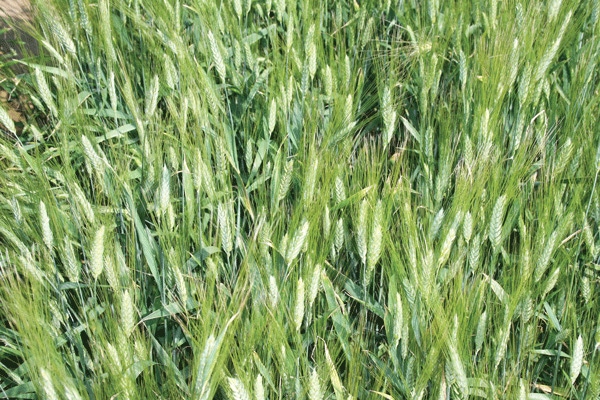April 20, 2011

Before planting a row crop after failed wheat, producers should make sure there will be no harmful herbicide residuals from treatments made to the wheat crop, said Dallas Peterson, K-State Research and Extension weed management specialist.
“Many of the commonly used ALS-inhibiting herbicides, including Ally, Ally Extra, Agility, Amber, Beyond, Finesse, Glean, Maverick, Olympus, Olympus Flex, PowerFlex, and Rave are persistent and have crop rotation restrictions.
This can affect re-cropping options after failed wheat,” Peterson explained.
In general, the most tolerant summer crop, to residues of these herbicides, is STS soybeans, followed by grain sorghum, he said. Product labels tend to specify grain sorghum, but forage sorghum and sudangrasses would likely have similar levels of tolerance, he said.
An exception to this guideline is sorghum with Maverick and Beyond herbicides, Peterson added. “Sorghum is extremely susceptible to Maverick and should not be planted for at least 22 months after application. Sorghum should not be planted until 9 months after Beyond application,” he said.
Producers who want to re-crop to sorghum on their wheat acres that have received one of the other ALS-inhibiting herbicides should wait as long as possible to plant, he said. Ideally, sorghum should not be planted on these fields until mid-June.
Cotton and non-STS soybeans are generally intermediate in tolerance to these herbicides, Peterson said. Although most of these product labels generally recommend not planting cotton or non-STS soybeans until the following year, the Maverick and Olympus labels allow shorter re-crop intervals in the case of catastrophic events if a field bioassay indicates it is safe to plant the crop, he added.
Corn, sunflowers, canola, and alfalfa tend to be the most susceptible crops to the sulfonylurea herbicides and have rotation guidelines of 12 months or longer. “With the high price of corn, many farmers may be interested in planting corn, but corn is very susceptible to residues of these herbicides,” he said.
Wheat fields that have been treated with Beyond herbicide can be re-cropped in the spring with any type of soybean or Clearfield sunflowers, but not to sorghum or corn, Peterson said.
Other herbicides that have rotational restrictions include Starane products and WideMatch. “Corn, sorghum, and small grains can be planted 120 days after Starane products, but other crops should not be planted until the following season. Alfalfa, sorghum, soybeans, sunflower, and cotton should not be planted for at least 10.5 months following WideMatch application,” he explained.
Most other commonly used wheat herbicides in Kansas have very short crop rotation restrictions. Certain management practices may help when re-cropping after wheat, he said.
“In fields where herbicide carryover is a concern, it would be best to wait until later in the spring before planting to allow as much time as possible for herbicide dissipation. Tilling the soil to try to ‘dilute’ the herbicide residue likely will not have a great benefit and could offset the benefits of not tilling the soil. Lowering residue managers on planters, so that an inch or two of topsoil is thrown out of the rows could help get the seed into soil with lower herbicide levels,” Peterson explained.
Terminating the wheat
Another consideration is how to kill the wheat crop, if producers plan to re-crop, he said.
“For glyphosate to be effective, it has to be absorbed by healthy, growing plant parts. Wheat that has been injured and is not dead yet, but not growing well, will be hard to kill with glyphosate,” Peterson said. “Paraquat is not a good alternative. Paraquat will burn back the top leaves, but is not translocated in the plants and will not kill the crowns and buds if they are still alive. The best approach is probably to wait until healthy regrowth from the crown is six inches tall before applying glyphosate.”
Always refer to the specific herbicide label regarding crop rotation guidelines and restrictions, Peterson said.
“Label guidelines for crop rotation are often complicated by soil pH and geography. Some product labels have very rigid crop rotation restrictions, while other labels allow shorter intervals in the case of catastrophic crop failure, as long as the producer is willing to accept the risk of crop injury,” he said.
Another confusing issue may be the existence of supplemental herbicide labels with shorter crop rotation guidelines than the regular label. Herbicides with supplemental crop rotation labels include Finesse, Ally and Ally Extra.
Brand names appearing in this release are for product identification purposes only. No endorsement is intended, nor is criticism implied of similar products not mentioned.
You May Also Like




